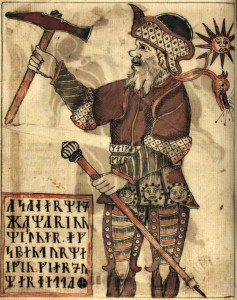History of Thorrablot

Þorrablót is an Icelandic midwinter festival that takes place in the month of Þorri, according to the Old Icelandic Calendar, which starts in late January and ends in late February. These festivals were started by Icelandic student associations in the latter half of the 19th century.
The first one was reportedly organized by the association of Icelandic students in Copenhagen in 1873. Related to other nationalistic feasts invented in the 18th and 19th centuries, such as Burns night in Scotland, the Þorrablót is an evening with dinner where participants hold speeches and recite poems, originally to honour the Norse god Thor, after whom the month is presumed to be named.
Calling the feast a blót (a feast held in honor of a god in Norse paganism) makes clear the reference to pagan times, which many nationalists of the 19th century considered a golden age of Icelandic history.
Þorrablót soon caught on as a tradition in Iceland and these feasts were organized by many other associations, especially youth organizations and student associations, which were most actively involved in the independence movement.
In 1958 a restaurant in Reykjavík, Naustið, started offering a platter with a selection of foods that had previously been common in the Icelandic countryside, but had become rare by that time. The food was arranged in slices on a wood trough made in the likeness of old troughs on display in the National Museum of Iceland. The restaurant advertised this platter as Þorramatur, thereby linking it with the tradition of the Þorrablót. The idea was well received and the serving of Þorramatur has since become a defining feature of Þorrablót.
http://en.wikipedia.org/Þorramatur
http://en.wikipedia.org/wiki/Þorrablót
